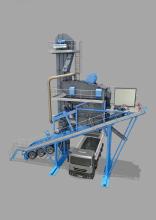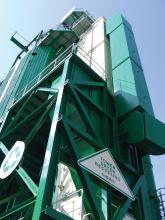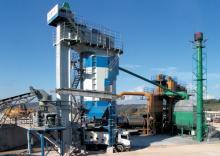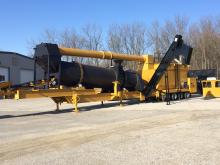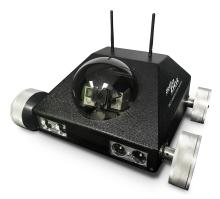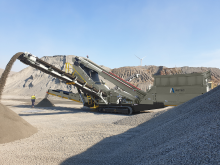
The asphalt plants market really took off during the building and infrastructure boom that occurred in the decades that followed World War II as plants began to address the need to increase output, but also became sensitive to America’s growing attention to pollution control and the environment.
“When I first started, state-of-the-art was a batch plant that was dirty, that you could usually see three miles away,” the late Don Brock, founder of Astec Industries, commented in the NAPA (National Asphalt Paving Association) historical report. “We’ve gradually progressed from there to cleaning them up with wet washers and baghouses to being invisible today. Today, we need to build a plant that you can’t see, you can’t hear, and you can’t smell.”
Today’s technological advancements have catapulted asphalt pavement production into a first class, highly efficient and cleaner process that suppresses noise, keeps emissions in line with local restrictions, makes greater use of recycled content than most other industries, and significantly saves costs - at least for those employing the latest available technologies and equipment.
The biggest trends in new technology aimed at plant efficiency include efforts to increase mobility options, plant versatility to better meet individual customer requirements, increased use of reclaimed asphalt pavement (RAP) in mixtures, cost-effective material transfer and delivery - all while continuing to use the latest plant technology available to improve pavement performance.
Another recent development by Astec was its introduction of the more compact model BG 1800, part of the company’s BG series of modular batch plants with a design that eases set-up, relocation and upgrades as plant operations grow. With optional features, the BG1800 is capable of producing mixes containing a high level of RAP, which can be incorporated into mix via dryer drum or through mixer unit, and crafted for agencies and other customers that require flexibility to produce a variety of mix designs.
The BG 1800 modular and transportable batch type plant is rated to produce 120 tons per hour with 1800kg batch sizes. Other plants in the BG series rate up to 240 tons per hour with up to 3200kg batch sizes.
With another modular unit, Astec’s Voyager 140 raised the bar on portability and production in one compact continuous mix plant. Occupying a small and portable footprint, the Voyager 140 offers full-size plant features with components designed to maximize mix quality, while improving efficiency and sustainability.
“As a society and as an industry, we do not seem to fully recognise the synergy between practicing sustainability and our profitability,” Malcolm Swanson, product manager-asphalt equipment at Astec, wrote a while back in a white paper titled, Practicing Sustainability at Asphalt Plants.
“There are probably things done in the name of sustainability and climate change mitigation that do not meet the test of common sense or business sense; but as far as I have ever seen, such ideas are usually not good for sustainability either,” he added.
“If we run our business better, including being wise with our use of energy and materials, we will improve our profitability and at the same time we will operate in a more sustainable way.”
At the heart of the Voyager 140 is the decades-proven Double Barrel drum mixer with production capacity of 140 metric tons per hour and RAP mixing capability of 50%. Another highly portable plant, the Voyager 120, based upon the Unified drum design, can run up to 30% RAP. Both plants feature V-flights in the drum to provide greater uniformity of the aggregate veil during drying, resulting in better heat transfer, a reduction of fuel use and increased productivity.
The Voyager 140 and Voyager 120 feature a pulse jet baghouse to minimize impact on the environment. These baghouses offer the best available emissions control technology. Both the Voyager 120 and the Voyager 140 offer large plant features while maintaining a small plant footprint.
One of Astec’s most recent technological advances was its flagship Double Barrel XHR High RAP drum mixer. By combining components with decades of proven performance but enhanced with state-of-the art design and material selection, recycle percentages of 70% are said to be guaranteed. Also, known as the DBXHR, portable versions are also available.

